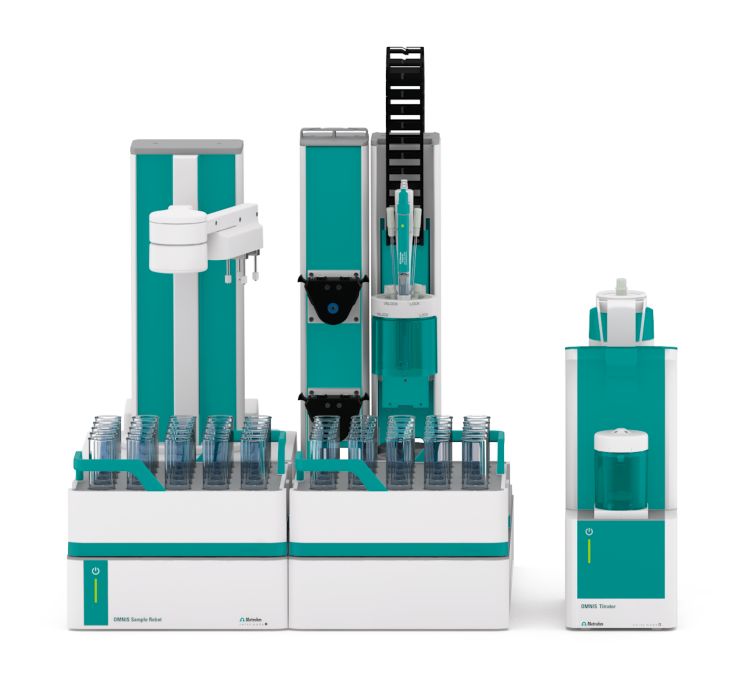Lithium salts (e.g., lithium carbonate and lithium hydroxide) are used in many applications such as the production of electrolyte and cathode materials in lithium ion batteries. Furthermore, lithium hydroxide is used for the production of lithium stearate, an important lubricant for cars and airplanes. In addition, it is utilized as an air purifier due to its ability to bind carbon dioxide.
While the majority of lithium carbonate is used for aluminum production, it is also used for the glass and ceramic industry. Lithium carbonate lowers the melting point of these materials. Thus, the electricity costs are cheaper to produce them. Additionally, it is a treatment of mental illnesses such as depression or bipolar disorder.
For all of these applications, it is important to know the quality of the pure lithium salts used in the various production processes. This Application Note presents an easy method for the assay of lithium hydroxide and lithium carbonate on an automated OMNIS system.
Lithium hydroxide and lithium carbonate can be directly analyzed without any sample preparation. For the assay of lithium hydroxide, it is of importance that the water is free from carbon dioxide, otherwise this would interfere with the titration.

Both assays are carried out on an automated system consisting of an OMNIS Sample Robot S and an OMNIS Advanced Titrator equipped with a dEcotrode plus.
After the sample is weighed into the beakers, the dilution and titration of the sample is automatically done by the system. The sample is titrated with hydrochloric acid until after the equivalent point.
For both assays, reproducible results with relative standard deviations below 0.4% (n = 5) are obtained. Additionally, carbonate impurities within the lithium hydroxide sample can be detected.
| n = 5 | Purity of LiOH in % | Purity of Li2CO3 in % |
|---|---|---|
| Mean | 99.20 | 100.78 |
| SD(abs) | 0.24 | 0.34 |
| SD(rel) | 0.24 | 0.34 |
Titration is a precise and reliable method for the assay of lithium hydroxide and lithium carbonate.
Using an automated OMNIS system allows you to analyze up to four samples simultaneously. The OMNIS system can be customized according to your needs, and expanded for other titration applications required for quality control.
Internal reference: AW TI CH1-1302-042020
 Share via email
Share via email
 Download PDF
Download PDF